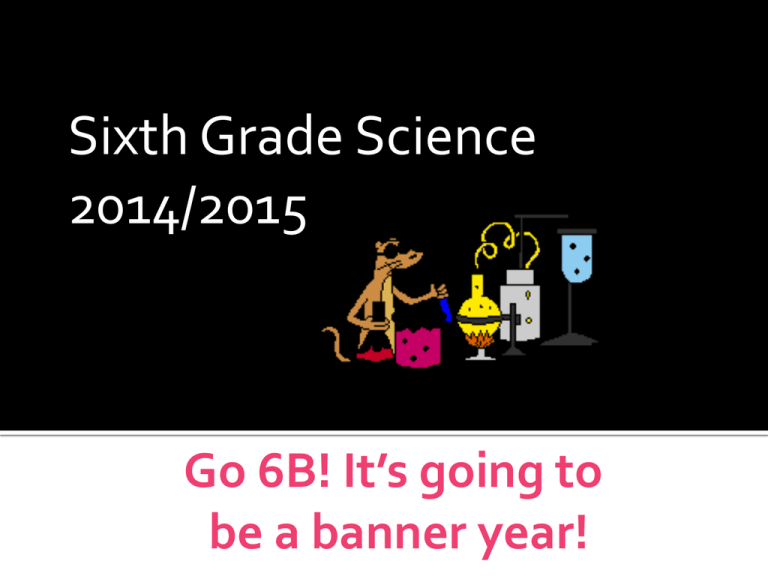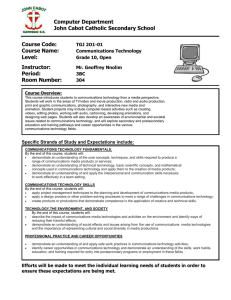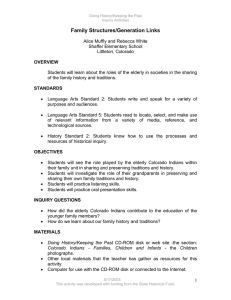Level 1 - Kyrene School District
advertisement

WELCOME Sixth Grade Science 2014/2015 Go 6B! It’s going to be a banner year! Harder tasks fatigue the brain; more complex tasks engage the brain. Ways a task may be adjusted for complexity: Level 1: Confirmation Inquiry The teacher has taught a particular science theme or topic. The teacher then develops questions and a procedure that guides students through an activity where the results are already known. This method is great to reinforce concepts taught and to introduce students into learning to follow procedures, collect and record data correctly and to confirm and deepen understandings. Level 2: Structured Inquiry The teacher provides the initial question and an outline of the procedure. Students are to formulate explanations of their findings through evaluating and analyzing the data that they collect. Level 3: Guided Inquiry The teacher only provides the research question for the students. The students are responsible for designing and following their own procedures to test that question and then communicate their results and findings. Level 4: Open/True Inquiry Students formulate their own research question(s), design and follow through with a developed procedure, and communicate their findings and results. This type of inquiry is often seen in science fair contexts where students drive their own investigative questions. PBL is a teaching method in which students gain knowledge and skills by working for an extended period of time to investigate and respond to a complex question, problem or challenge. Includes: Differentiation, technology, driving questions, collaboration, challenge, rigor, choices, responsibility and assessment. MY EXPERIENCE I’ve been teaching for 17 years. I taught 6th grade science, 6th grade social studies, 7th grade math and multimedia. MY BACKGROUND I grew up in Denver, Colorado. I attended Lakenheath Elementary School in England, Northglenn High School in Colorado, University of Northern Colorado Greeley and University of Phoenix. My email: slilly@kyrene.org My phone: 480-541-6107 Class web site: http://goo.gl/OjUeRW It’s important to check the whiteboard everyday. Class assignments will be written in blue, homework assignments will be written in green, and tests will be written in red. One of our goals this year is to try to instill a sense of responsibility in our students. One way to do this is to encourage them to speak to us if they have questions or concerns about an assignment, grade, test, etc. If their concerns are not answered, then please feel free to contact us. If there are issues at home, please share them with us because it often impacts the student’s academics. If your child is unable to print their homework, etc., they can always email it to us and we can print it at school. ABSENCES The student is responsible for missing assignments and turning them in the required amount of time. • check website • check planner • check Red Folders by the Exit Door • ask me • ask a student Students are expected to complete all assignments and tests missed during an absence. For every excused absence, the student is given TWO days to complete the missing work. 1st Quarter •Scientific Inquiry •Lab Safety •Measurement •Cells •Microlife Question Plan and conduct investigations Use appropriate tools and techniques to gather data Think critically and logically about relationships between evidence and explanations Communicate results Explain the importance of water to organisms Describe the basic structure of a cell Describe the function of cell parts Differentiate between plant and animal cells Explain how the human body contracts and fights illnesses and diseases. 2nd Quarter •Body Systems •Plants Animals Respiration – gills, lungs Digestion – stomach, intestines Circulation – heart, veins, arteries, capillaries Locomotion – muscles, skeleton Transpiration – stomata, roots, xylem, phloem Absorption – roots, xylem, phloem Response to stimulus (phototropism, hydrotropism, geotropism) – roots, xylem, phloem Energy & Science and It’s 3rd Quarter Impact on Society Renewable Nonrenewable Transfer of energy Energy Renewable and nonrenewable resources Ways energy can be stored and transformed How thermal energy can be transferred Compare the pros and cons of alternate energy sources and the technology behind them. Explain why all energy sources should be conserved. 4th Quarter Describe layers of the atmosphere Structures of lakes, rivers, oceans Water cycle Weather Earth’s Processes and Systems Describe the interactions between human populations, natural hazards, and the environment. Understand the impact of technology. 80% Assessment Tests & Quizzes Projects Lab Reports 20% Class Work, Homework & Practice Providing structure and procedures so that he or she is confident and comfortable with daily happenings Maintain high but reasonable expectations Communicate with you whenever necessary or upon request from you Provide valuable practice through homework Strongly protect your child’s right to a challenging learning environment free from distractions and misbehavior Supporting the classroom procedures and providing structure at home. Monitoring the neatness, accuracy and level of difficulty of their homework. Communicating ANYTHING about your child that might interfere with their learning.




